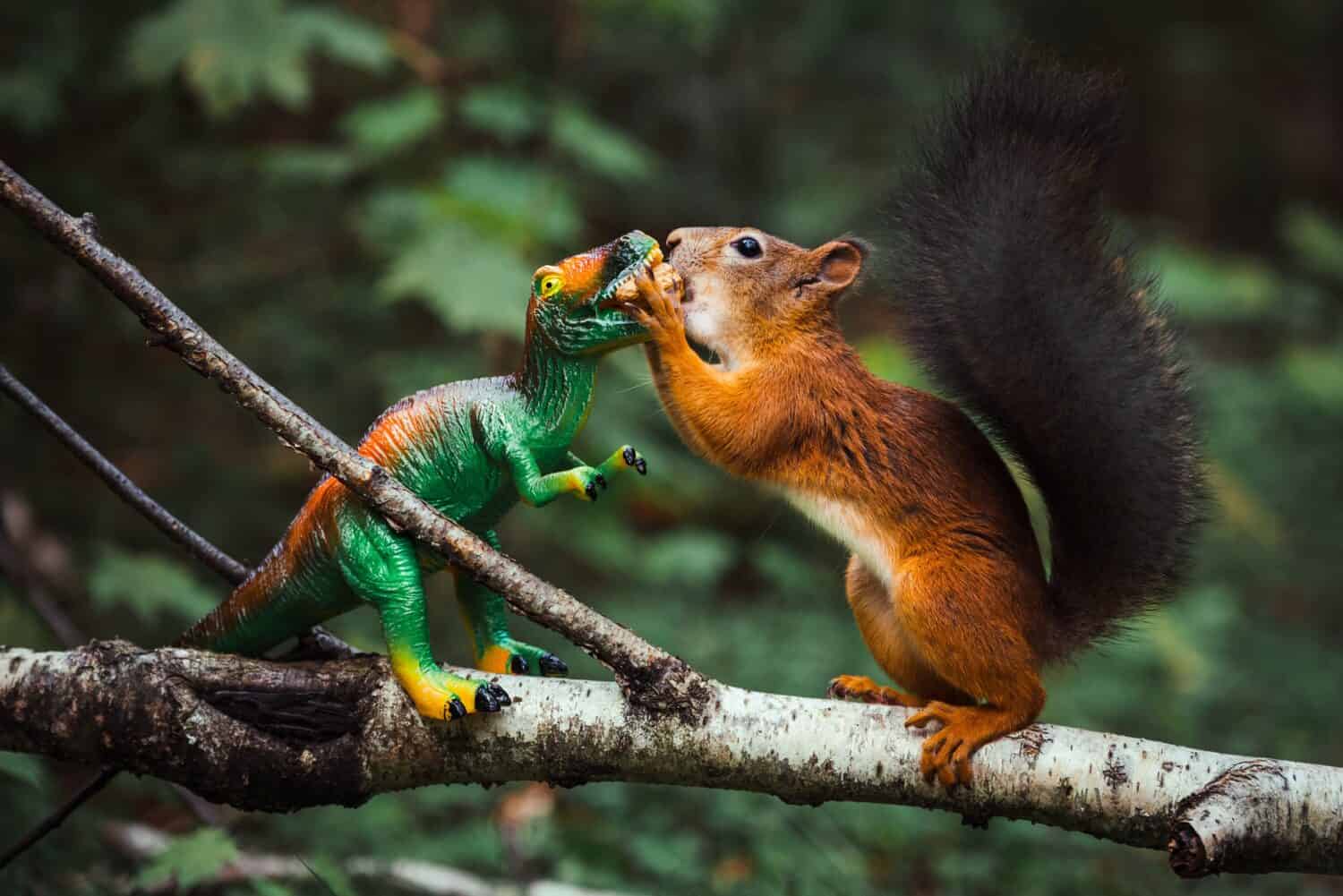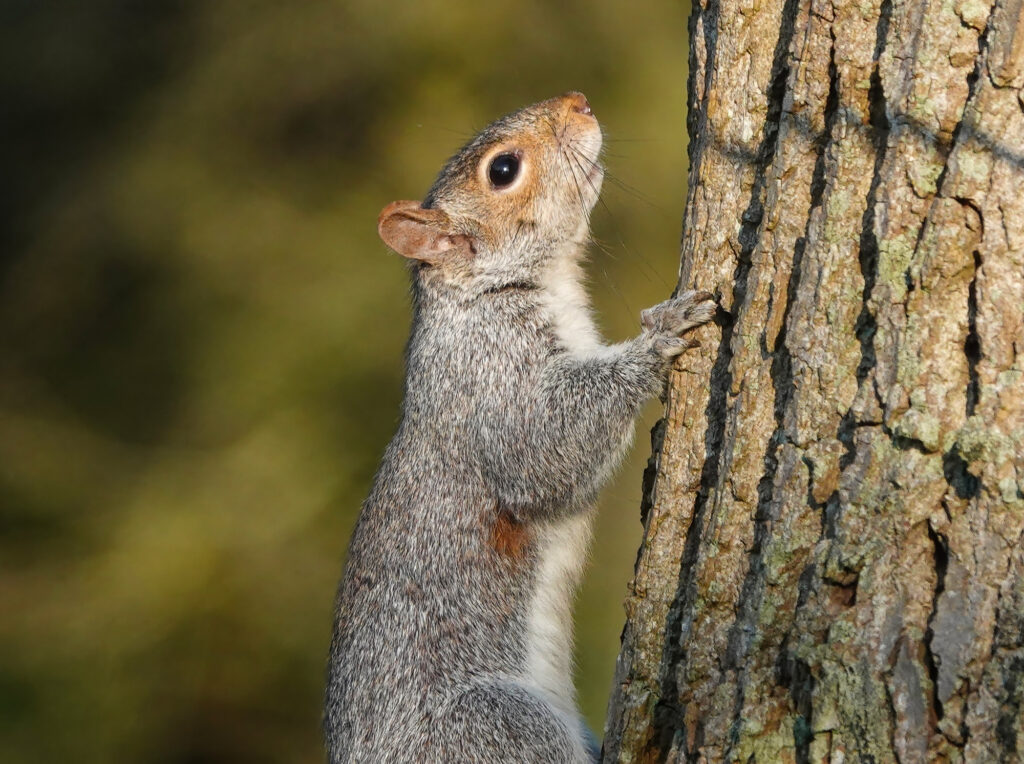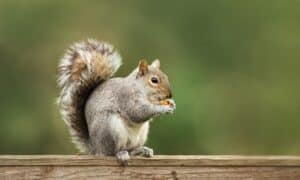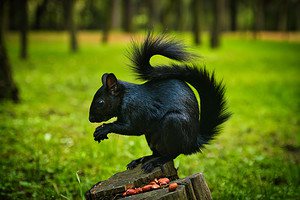Whether you love them or hate them, squirrels are interesting and very busy creatures. This time of year, squirrels are busy collecting nuts to store away or bury for the winter. They run across the road far more often in their haste to pack away enough groceries to feed their families through the winter. Depending on where you are in the U.S., squirrels may or may not go through a harsh winter with snow and frigid temperatures. Either way, the food selection is not as plentiful as it is for all the other seasons. Squirrels are somewhat mysterious in what they do and why they do it. One question many people have pertains to the squirrels losing fluff in their tails and why it happens.
Where Did the Fluffy Tail Go?

Squirrels have big, fluffy tails that they use for several things, such as communicating danger is near.
©iStock.com/BetsyMoseley
You may notice squirrels hopping along with less-than-full and fluffy tails. There are several reasons a squirrel may end up with a rather sparse-looking tail at different times throughout the year. However, this is not a list of why a squirrel may have a completely naked tail or fur missing all over their bodies. The reasons in those types of situations can be that the squirrel is sick or has mange. The reasons why squirrels lose fluff in their tails are listed below from most to least common.
1. Mother Squirrels are Great Nest Makers

Mama squirrels create a soft bed for their babies by lining the nest with tail fur.
©Marc A Sherman/Shutterstock.com
Mother squirrels doing their best to be excellent mamas pull their tail fur out when they are making a nest or are expecting babies. They do this to line the nest with fur and soften it for their newborns once they are born. Baby squirrels stay in the nest until they are 12 weeks old, then they venture out on their own, making mischief and eventually finding a place to make nests of their own.
Though, mother squirrels aren’t the only animals to do this in preparation for newborns. Many mammals use their fur to line their nests or dens. Many types of birds line their nests with plucked feathers from their breasts. Foxes pull out their fur to add softness to their dens for their kits. Many other animals use moss or other soft items to make their dens comfy for their babies, but squirrels always do so by using their tail fur.
2. Squirrel Molting Season

A red squirrel amid springtime molting.
©irishka5/Shutterstock.com
Squirrel molting season comes around twice a year. One of the times occurs in July when the squirrel sheds all of their fur, including their tail fur. In September, the squirrels molt again, but this time, it’s only the fur on their bodies. They switch it out for their thick winter coats. When an Eastern grey squirrel molts, it is not as apparent as it is with the red squirrels (as seen in the photo above) because their fur goes from bright burnt orange and brown to white and grey to help them blend in with the snow. Since the fur comes out in patches, the red squirrels end up looking rather comical.
3. Predator Attacks Can Leave a Naked Tail

Unlike this plastic dinosaur attack, some predators can pull the hair out of a squirrel’s tail.
©Azovsky/Shutterstock.com
Predators are no joking matter to little squirrels with a ton of enemies. Weirdly, a squirrel’s tail can be degloved easily. This isn’t unlike the lizards capable of dropping their tails and escaping a predator because of it. I’m sure it isn’t a fun situation or something the squirrel wants to happen, but if it’s life or death, it’s nice to have options. Unlike the lizard’s tails, squirrel tails do not grow back. It is much harder for a squirrel to exist in nature with only a part or no tail at all.
How Important is a Squirrel’s Tail?

The Eastern grey squirrel is the most common type of squirrel in the U.S.
©iStock.com/Nigel Harris
A squirrel’s tail is an important ingredient in the expert balancing acts they pull off when jumping from tree to tree. It is much like a tightrope walker and the pole they use to create the best rotational inertia while balancing. Squirrels are a bit like tightrope walkers combined with trapeze artists. They rarely miss and can do some seriously amazing jumps on the thinnest lines and branches. A squirrel’s tail is extremely important when it comes to their balancing acts done at impressive heights.
The fluffy squirrels use their tails to stay warm and keep their young warm when it’s cold out. As we’ve discussed, they use their tail fur to line their nests to keep their young warm and provide a soft area for them to grow strong. Branches aren’t the most comfortable spots for newborn squirrels.
The mischievous rodents also use their tails to communicate. Other squirrels may not be able to hear their warning cries but will be able to see the waving of the tail, which represents danger being present to other squirrels in the area.
Squirrels can live full lives without a tail, just as any handicapped human can find ways to work around the barriers they find. The squirrel will have balance issues to work, though, and may have a harder time staying warm in the winter. Squirrels are adaptable animals who work hard to have good lives high in the trees, and not having a tail will not stop them from succeeding at that goal.
Thank you for reading! Have some feedback for us? Contact the AZ Animals editorial team.







